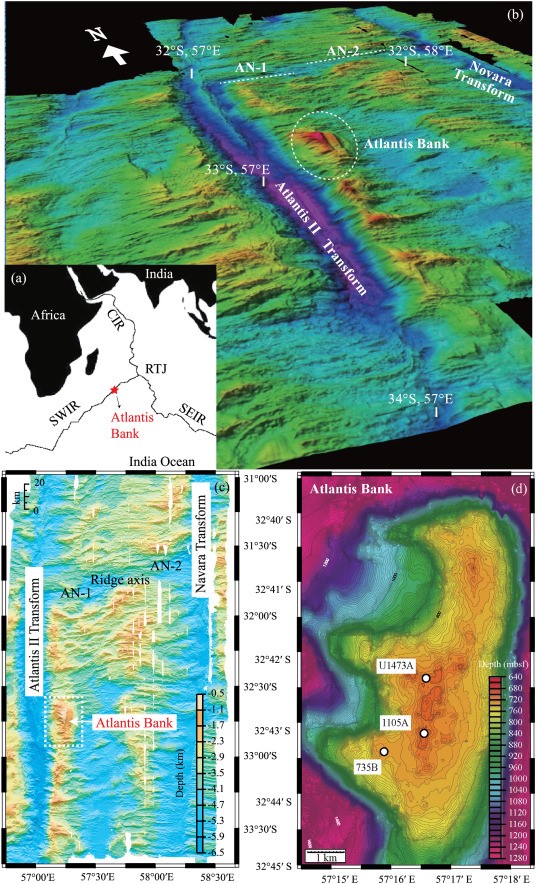Naixiao Xu1 , Lingmin Zhang1, Huaiyang Zhou1, Hao Cheng1✉
1 State Key Laboratory of Marine Geology, Tongji University, Shanghai 200092, China
✉email: chenghao@tongji.edu.cn
Abstract
Here we report the discovery of mosaic zircons in Hole U1473A on the Atlantis Bank in the Southwest Indian Ridge. Oxygen isotope, U\\Pb dating, and geochemical analyses of the zircons were carried out directly in petrographic thin-sections. The mosaic zircons are from diorite and oxide gabbro at shallow depths, where as the nonmosaic zircons occur in oxide gabbronorite and tonalite at greater depths. The majority of zircons have δ18O of 5.5 ± 0.1‰, which are mantle-like values, reflecting formation by simple fractional crystallization. No correlation exist between U\\Pb ages, δ18O values, and the mosaic microstructures. The mosaic subdomains in a single zircon are well correlated with some trace elements and fractures. Therefore, the variable trace element contents were produced during crystallization, and associated with secondary brittle deformation due to movement on mid-ocean ridge detachment faults. The pervasive brittle deformation weakened the originally rigid zircon and triggered fracturing. The fractures became highly permeable pathways, allowing rapid grain-boundary diffusive loss of Pb, which resulted in the relatively young age of 11.42 ± 0.41 Ma for the mosaic zircons as compared with 12.16 ± 0.14 Ma for the non-mosaic zircons. The zircon trace element patterns are all indistinguishable from global oceanic zircons. However, the trace element abundances and ratios require a significantly depleted normal-type mid-ocean ridge basalt mantle source.
Full Article: https://doi.org/10.1016/j.lithos.2021.106052



